
Synonymous with good food, butter is the foundation of many of the best dishes to come out of any kitchen. The dairy product is created from the proteins and fats found in milk and cream, and is made by churning the milk to separate the solids from the liquid (buttermilk). While butter is mainly made from cow's milk, it is also made from the milk of other animals such as sheep, goat and buffalo. There's also a variety of different types of butter on the market such as salted, unsalted, grass-fed, clarified and cultured.
Butter has a rich flavour and creamy texture due to its high concentration of fat, which makes it great for high-heat cooking. It's also a popular ingredient in baked goods and desserts, as well as a tasty spread on bread and a delicious addition to roasts and pasta dishes.
Cultured butter is an artisanal take on the spread, which is created by culturing the cream before turning it into butter. More popular in European countries, this style of butter has a more complex and tangy flavour and is longer-lasting, whereas most Australian-made butter has a sweeter flavour. Many small-batch butteries in Australia are focusing on cultured butter to celebrate this European-inspired take on the spread.
What are the health benefits of eating butter?
According to Monica Cavarsan, butter from grass-fed cows is higher in many nutrients than butter from grain-fed cows, which makes it a healthier option. “Butter is a rich source of vitamins A, D, E, B12 and K2, thanks to cows grazing on fresh, green grass, which is different to butter from cows that are fed processed, grain-based feeds or conserved grass. Butter does not carry trans-fats like processed foods do. Instead, it is a dairy trans-fat, which is considered healthy."
This story is from the Issue #41, 2022 edition of Eat Well.
Start your 7-day Magzter GOLD free trial to access thousands of curated premium stories, and 8,500+ magazines and newspapers.
Already a subscriber ? Sign In
This story is from the Issue #41, 2022 edition of Eat Well.
Start your 7-day Magzter GOLD free trial to access thousands of curated premium stories, and 8,500+ magazines and newspapers.
Already a subscriber? Sign In
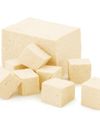
ARE YOU TO FU enough?
Love it or hate it, everyone has an opinion about tofu. Tofu is a very popular plant-based protein for vegans and vegetarians, but now this humble bean curd is starting to shine for meat lovers too as an alternative source of protein.

Sweet TRAYBAKES
Whether you want to feed a group of people or make a batch of treats for the week, traybaking is a no-fuss way to cook up something sweet and easy that will please everyone. Your family and friends will love you when you offer them some of our: cinnamon scrolls; fruity chocolate; espresso brownies; lemon & coconut slice; or ginger cake with brown butter frosting.

ROLL UP
When you roll food, whether in Lebanese bread, a thin pancake or whatever you choose, you can create a parcel of nutrition that is perfectly suited to your own tastes and needs. Here are some roll-up recipes that will suit every occasion including: mango, snow pea, & sprout rice paper rolls; oat crepes with coconut yoghurt & mixed berries; or beef meatball & tzatziki flatbreads.
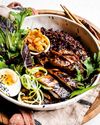
RICE BOWL Lunches
If you are working from home, or even enjoying your weekend, and lunchtime rolls around but you have no plans for lunch, then a rice bowl is an ideal saviour.

PLANT-BASED PIES
Pies are a piece of gastronomic brilliance: a filling with a case and lid you can eat is food genius. The first pies date back to Egyptian times and there is a recipe for chicken pie that was carved into stone more than 4000 years ago. For millennia, however, the pie casing was mostly used to cook the filling, but for around 500 years or more we have been eating the pie crust too.

20 FOOD CRAVING HACKS
Decipher the deeper causes of your cravings and discover tricks to curtail them.
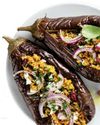
Eggplant (Solanum melongena L)
Eggplant is a wonderful option for vegans and vegetarians, extremely nutritious and highly versatile in the kitchen.
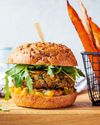
5 PANTRY SAVIOURS
Whether you're cooking a simple breakfast or something more exotic, here are five pantry food staples you should have on hand to cook plenty of delicious meals in the comfort of your own home.
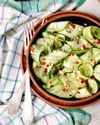
Cucumber (Cucumis sativus)
Cucumbers are delicious fresh but they also offer plenty more options in the kitchen.

Our Chefs
Meet the chefs who bring this issue's recipes to you: Lisa Guy, Georgia Harding, Lee Holmes, Sammy Jones, Raquel Neofit, Naomi Sherman and Ames Starr.